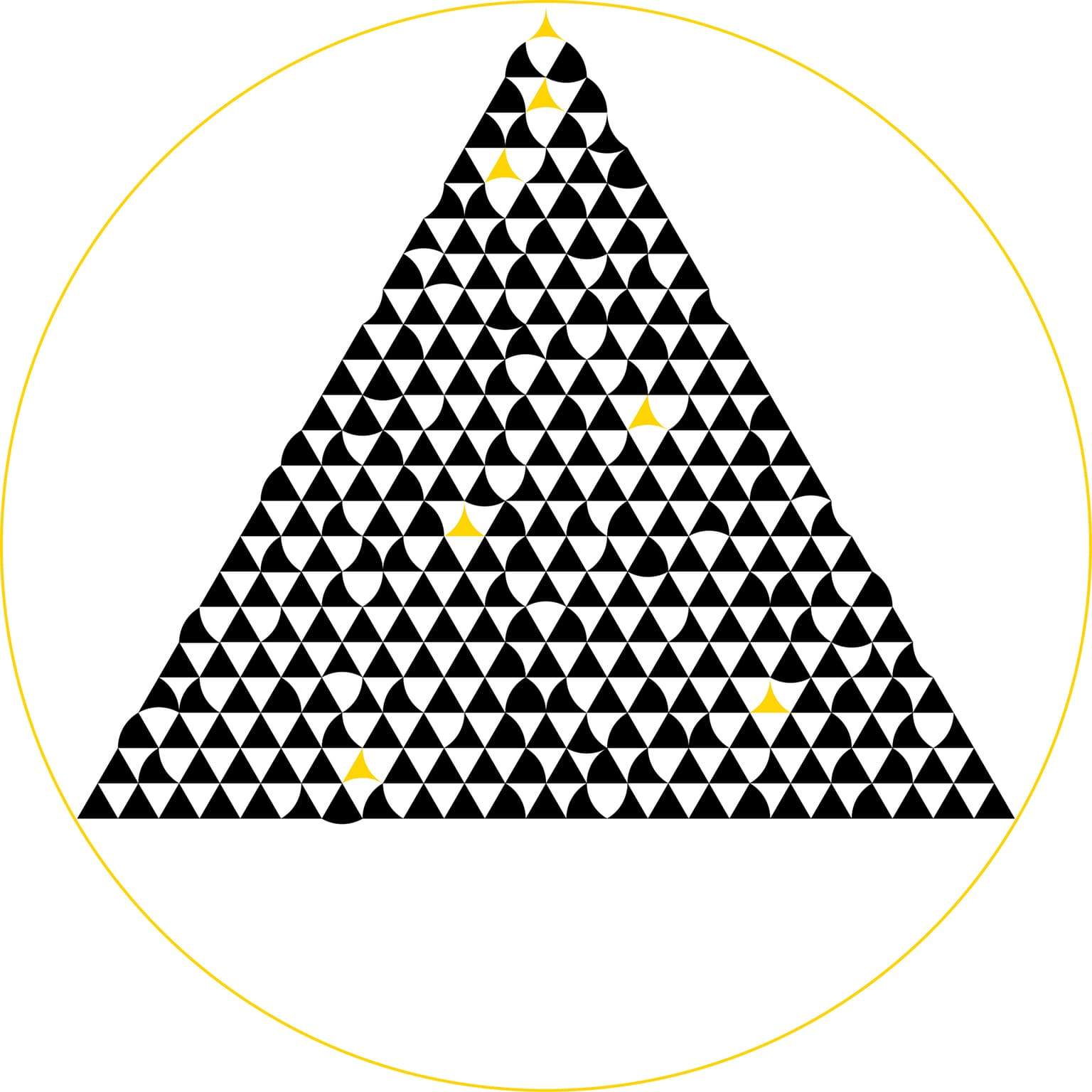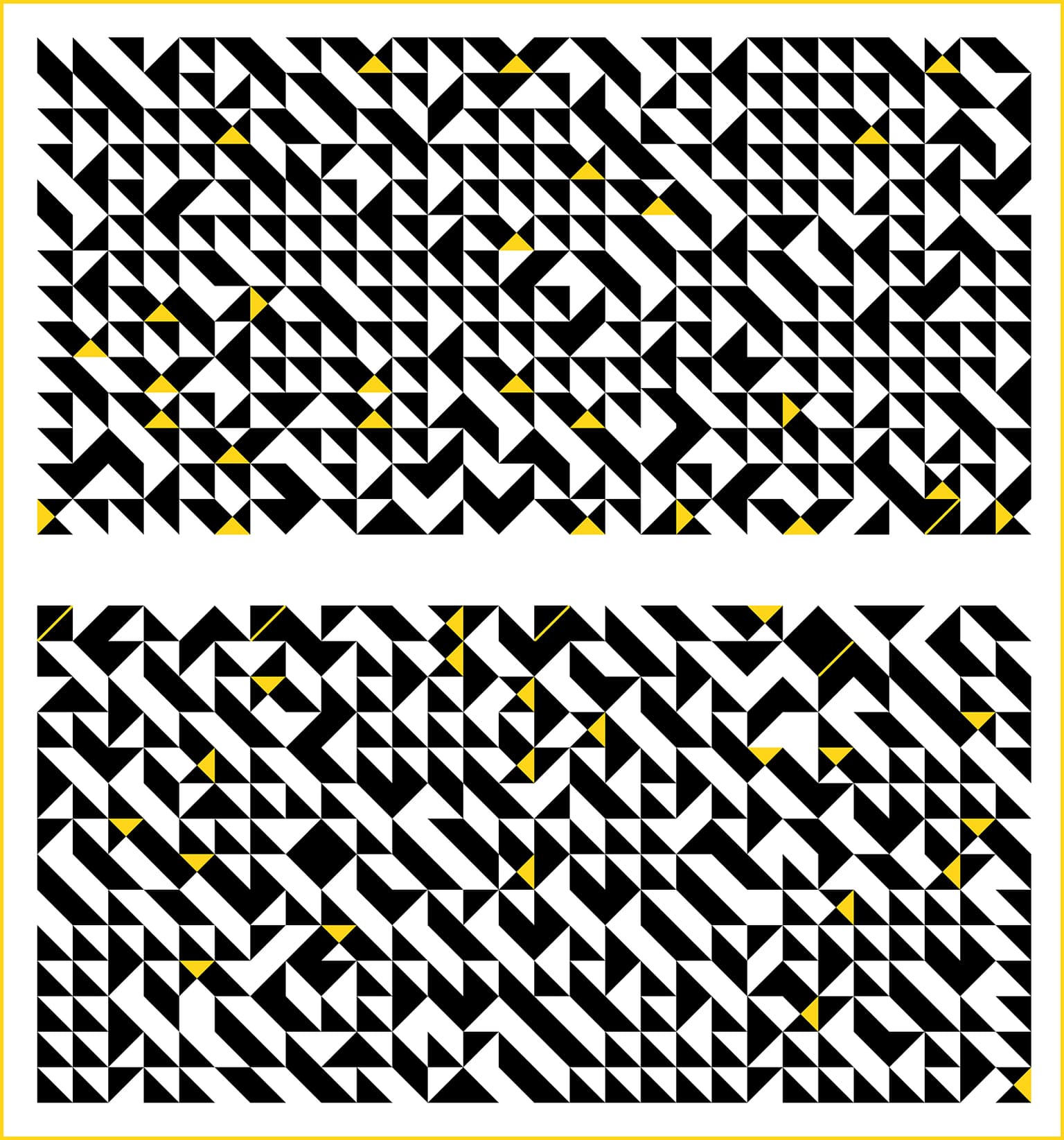2020 Joint Mathematics Meetings
Margaret Kepner
Artists
Margaret Kepner
Independent Artist
Washington, District of Columbia, USA
Statement
I enjoy exploring the possibilities for conveying ideas in new ways, primarily visually. My goal is to express mathematical concepts through attributes such as color, geometric forms, and patterns. One topic I have explored recently is integer sequences -- their distributions, rhythms, and overlaps. When these sequences are displayed in different formats, interesting relationships are revealed. In addition to using color, the orientation of shapes and edge-morphing can indicate membership in a particular sequence.
Artworks

Sequences on a Grid with Equilateral Triangles - 276
50 x 50 cm
Archival Inkjet Print
2019
This piece starts with a triangular grid representing the integers from 1 to 276, arranged in a downward snaking path. An integer that is not a lucky, Harshad, or generalized pentagonal number is shown as a black equilateral triangle. The shapes of triangles representing lucky numbers are deformed by replacing their left sides with a curved segment. The segments alternate between concave and convex. In a similar way, Harshad numbers are revealed by curved segments on the right side, and generalized pentagonal numbers exhibit curves in the base. For example, the integer “3” (leftmost shape in the second row) is the 2nd lucky number and the 3rd Harshad number. Thus, its left side is convex and its right side is concave; the base is straight.

Sequences on a Grid with Right Triangles - 392
50 x 50 cm
Archival Inkjet Print
2019
In this work, several integer sequences (between 1 and 392) are displayed on a rectangular grid using isosceles right triangle shapes. In the top rectangle, black triangles are oriented in four ways depending on whether they represent prime, happy, or triangular numbers, or none of these. When an integer belongs to two sequences, the corresponding triangles are superimposed and their intersection region is colored yellow. (There are no three-way overlaps for these sequences.) The lower rectangle follows the same logic for three different integer sequences: the lucky, Harshad, and generalized pentagonal numbers. The number “1” appears at the lower-right corner of the top rectangle and at the upper-left corner of the lower one.